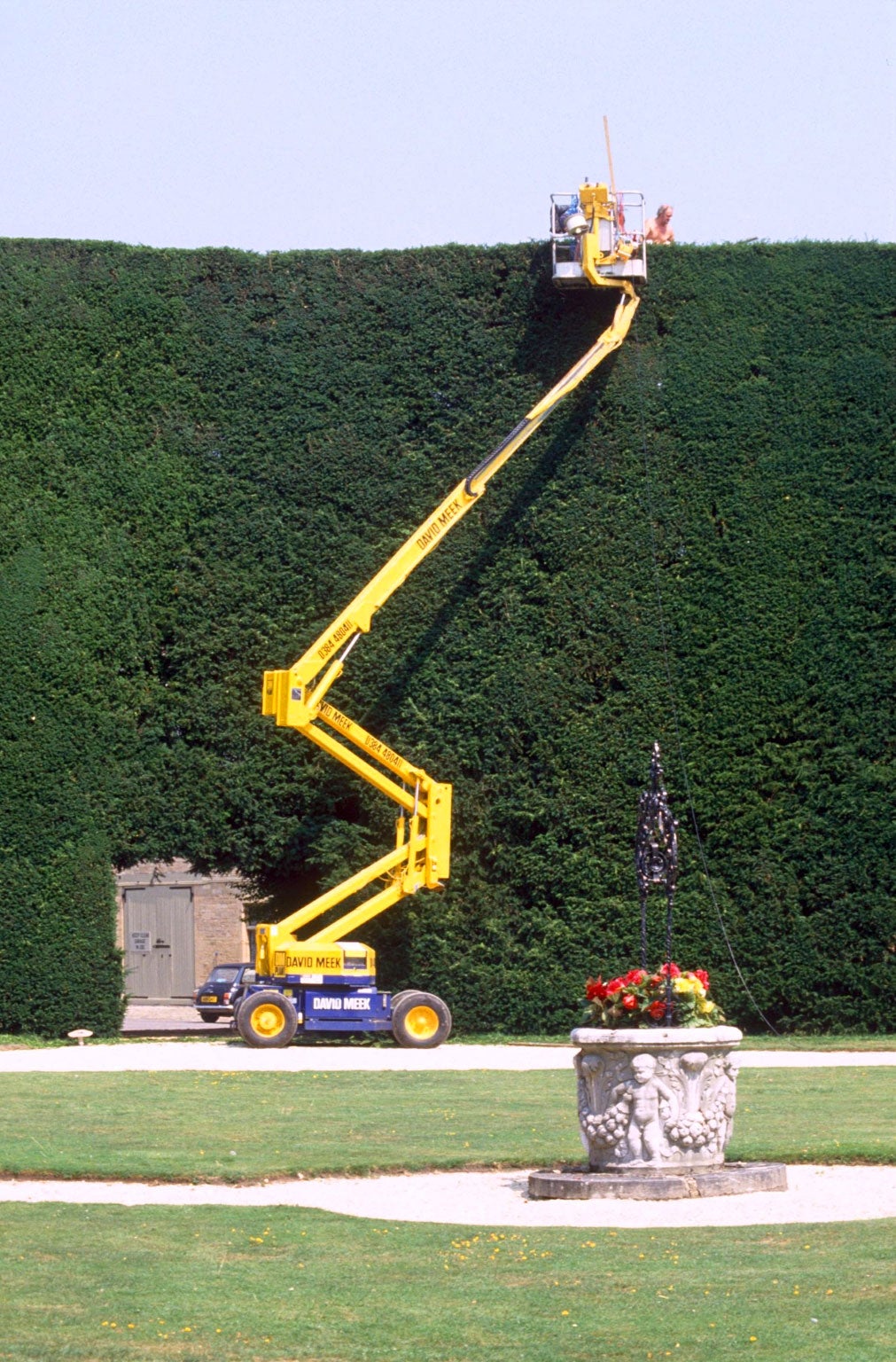The clippings of a 300-year-old, 150ft yew hedge can save the lives of cancer patients
The green giant is on the Bathurst Estate in Cirencester and its clippings are sold to pharmaceutical firms as a key ingredient of docetaxel, a chemotherapy drug

Your support helps us to tell the story
From reproductive rights to climate change to Big Tech, The Independent is on the ground when the story is developing. Whether it's investigating the financials of Elon Musk's pro-Trump PAC or producing our latest documentary, 'The A Word', which shines a light on the American women fighting for reproductive rights, we know how important it is to parse out the facts from the messaging.
At such a critical moment in US history, we need reporters on the ground. Your donation allows us to keep sending journalists to speak to both sides of the story.
The Independent is trusted by Americans across the entire political spectrum. And unlike many other quality news outlets, we choose not to lock Americans out of our reporting and analysis with paywalls. We believe quality journalism should be available to everyone, paid for by those who can afford it.
Your support makes all the difference.It's 33ft wide, 150ft long and 40ft tall, but the massive yew hedge at the Bathurst Estate in the Cotswolds is more than just a 300-year-old horticultural wonder, it's a life-saving tree.
This week, as they do every August, two gardeners – Tim Day, who has trimmed the hedge every year since 1974, and John Rutterford – are working flat-out to lop up to one ton of clippings off the green giant. It should take them 10 days to complete the job at the Cirencester estate, at the cost of £5,000 to the 9th Earl Bathurst.
Once the job is done, the chainsaws are packed away and the cherry-picker gone, the vast bags of clippings won't end up in landfill or a giant compost bin, rather they will be trucked off to the Continent to become the life-saving cancer drug docetaxel.
"I'm afraid to say I don't know a great deal about what happens to it," Lord Bathurst tells me. "I know that a very good friend of mine was once treated with it, but Friendship Estates, which takes it away, is rather secretive as to where it ends up. It's wonderful to know that it's going to a worthy cause, though."
It's certainty not a profit-making enterprise, adds Lord Bathurst, whose forebears have cared for the hedge at their family seat of Cirencester Park for more than nine generations. "They pay us 35 pence a kilogram to take it away, which means, with the cost of trimming the thing, we actually make a substantial loss. Not that I'm complaining, as we don't have to touch the thing for the rest of the year, other than knocking off some snow in winter. Otherwise, it just looks after itself."
The volume of off-cuts from Lord Bathurst's hedge might seem vast, but it is only a tiny fraction of the several hundred tons collected between July and September each year by a small number of specialist firms.
These clippings are then sold to pharmaceutical firms, which use an active extract in the yew as a key ingredient of docetaxel, a chemotherapy drug used to treat various forms of cancer.
"We collect more than 100 tons of clipping each year," explains Matthew Cooke, from Friendships Estates Limited, who is setting off to the Bathurst Estate from his Yorkshire base today. "We travel all over the country and are always looking for new yew hedge. A healthy one should provide about one to four kilos of clippings per metre per year."
Cooke is a little more vague about where the precious green stuff goes after he collects it, though: "We have competitors out there in the south of England and Belgium, so I wouldn't want to admit exactly where it goes, except to say that we ship to a company in Europe that extracts the active ingredients and then moves it on to the drug producers."
It's not clear which producer Lord Bathurst's clippings end up with, but a spokesman for Sonofi, one of the biggest docetaxel producers, confirmed that while the drug was traditionally sourced from the bark of Pacific yew trees, it is now produced from the clippings of Europe's hedgerows.
According to John Newlands, a cancer information nurse at Macmillan Cancer Support, the drug is used in chemotherapy to treat breast, lung, head and neck, prostate and stomach cancers. "Typically a patient would take one treatment every week for six to eight weeks," he explains. "For breast cancer, for example, it would often be used after surgery as a preventative measure to combat cancer cells that may remain elsewhere in the body."
Docetaxel is not the only cancer drug making use of the yew tree. A drug called paclitaxel uses bark from the Pacific and Himalayan varieties. Paclitaxel is also from the taxane family, which works by interfering with cell division and by the blocking of cell growth.
However, rising cancer rates – along with a demand for firewood – have meant that the yew tree has been placed on the International Union for Conservation of Nature endangered list in Afghanistan, India and Nepal.
There is no such worry in Cirencester, though, says Lord Bathurst. "There's a yew tree in Wales that they think was 3,000 years old when Christ was born and that's still there, so I think we're quite safe here."
Join our commenting forum
Join thought-provoking conversations, follow other Independent readers and see their replies
Comments